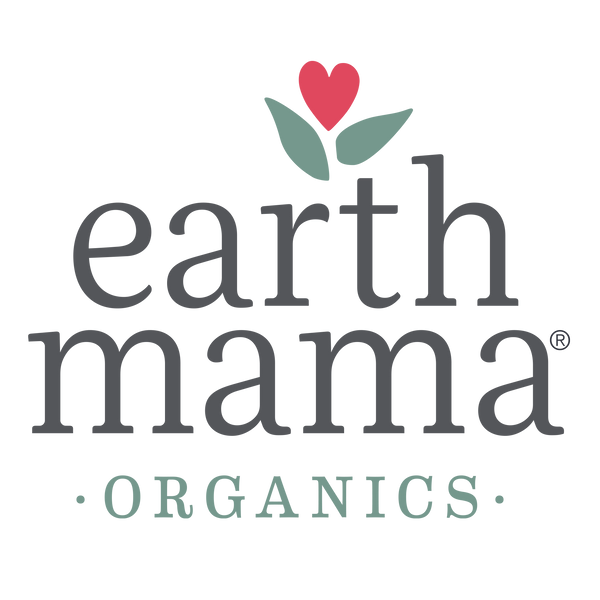
Hello, and welcome to the official Earth Mama crash course in PVC — aka Polyvinyl Chloride — why it’s toxic, and why you WON’T find it in that spiffy Earth Mama travel bag you received. Go ahead and put on your white lab coat and safety goggles, because we’re about to drop some serious science.
Earth Mama puts great thought into what goes into our products; they’re the best of the best. But did you know that we care greatly about what the packaging is made of, too? Of course we do! Because if Earth Mama products are made with organic ingredients, formulated to work with your body, you’d better believe we go full circle, and make sure the packaging is safe, too.
Polyvinyl Chloride (PVC) is a component of soft, flexible vinyl. It’s in that flexy-bendy baby doll, the pool toy or that cute wall sticker set. Sure, it’s convenient — it makes a product feel, look and work nicely — but the chemicals involved can be harmful to our bodies. PVC is the most problematic because of the stabilizers (like lead and other heavy metals) and plasticizers (like phthalates, which just shouldn’t even be a word because who can pronounce that? No one. That’s who) required to soften the PVC and make it more flexible.
The phthalate family of plasticizers give PVC its flexibility — but lead, phthalates, volatile organic compounds (VOCs) and dioxin are just a few reasons to avoid PVC. First of all, there’s the word volatile. Doesn’t sound safe, does it? Second, these are well-established carcinogens and endocrine disruptors. Think about that word: it disrupts the reproductive, immune, endocrine and neurological systems. PVC is dangerous throughout each stage of its life-cycle. Whether it’s being manufactured, used in-home or disposed of, the chemicals found in PVC can wreak havoc on human and environmental health.
What differentiates PVC from other vinyls? Chlorine. Chlorine generates dioxin, which is produced in both the manufacture and disposal of PVC. Fun fact: vinyl chloride is classified as a known human carcinogen by the EPA, the National Toxicology Program and the IARC.
Historically, DHEP (diethylhexyl phthalate) is the main plasticizer, and can be released to air from plastic materials, coatings, and flooring, and can lead to high indoor concentrations — which are considered highly toxic. And smelly.
Watch for “vinyl” in product descriptions, as it is commonly used as a nickname for PVC. But. Keep in mind the term “vinyl” may also be used to describe ethylene vinyl Acetate (EVA) and polyethylene Vinyl Acetate (PEVA). Both of these plastics are non-chlorinated and are considered to be a safer alternative to PVC and are acceptable choices.
So when in doubt about the use of the term vinyl, ask if it’s PVC.
Now for the clear window of our travel bags: it’s made with Thermoplastic Polyurethane (TPU — NOT the same as polyurethane foam, which has toxic chemical components). The basic TPU formulation is still petroleum-based but it is quite inert and doesn’t require plasticizers like phthalates to achieve flexibility. With properties that are safer for applications in the human body, we knew TPU was the best choice for our travel bags.
As Earth Mama develops products for pregnant mothers and babies, we know that exposure to toxic chemicals begins in the womb. And as children grow, their brains and bodies are rapidly developing, and their metabolism and behaviors (e.g. crawling on ground, putting items in their mouths) make them uniquely vulnerable to harm from toxic chemicals. So if decreasing exposure to worrisome chemicals in our packaging could help reduce the toxic exposure in our homes, we’ll be putting in the effort to make the safer choice. Rest assured: the bag that carries our products has been vetted as much as our favorite herbs and oils that comprise Earth Mama Organics.
That’s it! We hope you enjoyed your science lesson. And if you’re feeling overwhelmed right now, you’re not alone. Just take a deep breath and remember that you don’t have to change everything at once – little changes can create a BIG impact in the health of your family!
Need more in-depth information? Visit the links below.
https://thesoftlanding.com/avoid-toxic-pvc-vinyl-plastic/
https://www.cancer.gov/about-cancer/causes-prevention/risk/substances/vinyl-chloride
http://chej.org/polyvinyl-chloride-pvc/
http://www.greenspec.co.uk/building-design/polyvinyl-chloride-pvc-environment-health/
